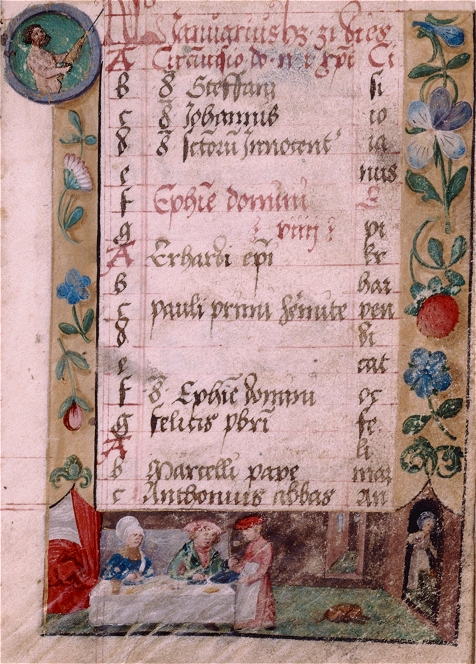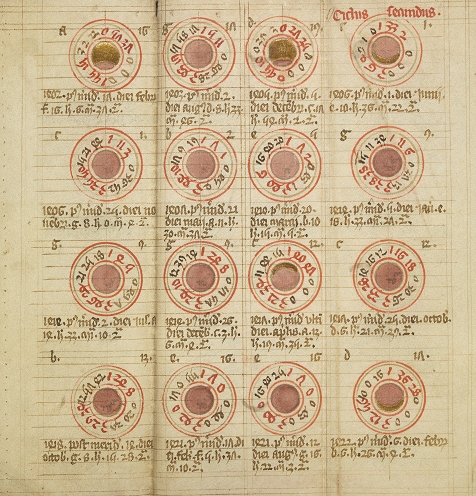- 1
- St Sigismund of Burgundy (sixth century)
- May Day/Beltane: Mayday was a celebration of life and love, of procreation and renewal. It signified mystical union, the time when the plant was in full growth and in harmony with the environment. It was a time of games, song and revelry. The May Queen was chosen in a variety of ways - because she was the most honored, the most beautiful, or sometimes she was selected by the winner of a joust or tournament. Celebrants wore green sashes across their bodies or wreaths on their heads. They danced around the maypole counterclockwise, singing. At the end of the song, they gathered dew, which they rubbed into their skin to help their complexions. After this, greenery was collected to make wreaths for the hall. Primroses and convolvulus picked on May first and turned into wreaths were believed to avert evil. Games of all sorts were played and tournaments were held. A feast finished off the night where the foods were all green. In Scotland at Beltane, shepherds cut a circular trench and lit a fire of sacred wood. They made a caudle of eggs, butter, oatmeal and milk, spilling some on the ground to ensure the safety of their flock in the coming season and to placate the old gods. They drank the caudle with beer and whisky. Often an oatcake was baked with nine raised knobs dedicated to various deities and each shepherd broke off a piece and said, "This to thee, preserve thou my sheep." Cattle were made to pass through the smoke of the Beltane baal fire (bonfire) on May first in order to cleanse them. This custom came from the Druids and was eventually Christianized as protection from evil in God's name and to guard against sickness. At one time cattle, especially bulls, were sacrificed at Beltane and it was thought to be especially effective if there was a crescent moon.
- 2
- St Athanasius (ca. 296-373)
- 3
- St Philip (first century)
- St James the Less (d. 62)
- 4
- Veneration of the Thorn: At the festival of the Veneration of the Thorn, holy bushes and trees - those marking sacred places and holy wells - are acknowledged by having new scraps of cloth tied to them.
- 5
- St Hilary (ca. 401-459)
- 6
- St Petronax (d. ca. 747)
- 7
- St John of Beverley (d. 721)
- The Nones of May: Dancing through towns and villages was commonplace.
- 8
- St Peter (d. 1174)
- 9
- St Pachomius (c. 292-348)
- 10
- St Antoninus (1389-1459)
- 11
- St Walter of l'Esterp (d. 1070)
- 14
- St John the Silent (ca. 482-559)
- 15
- St Dympna (seventh century)
- St Isidore the Farmer (ca. 1110-1170)
- 16
- St Carantoc (ca. seventh century)
- St John Nepomucen (ca. 1330-1383)
- St Brendan: The legendary voyages of the Irish Celtic priest, St. Brendan the Navigator are acknowledged on this day.
- 17
- St Madern (sixth century)
- 18
- St Eric (d. 1151)
- 19
- St Dunstan (909-988)
- 20
- St Bernardin of Siena (1380-1444)
- 21
- St Godric (ca. 1069-1170)
- 22
- St Rita of Cascia (1377-1447)
- 23
- St Julia (fifth century)
- 24
- St David of Scotland (ca. 1085-1153)
- 25
- St Bede (673-735)
- St Gregory VIII, Hildrebrand (ca. 1021-1085)
- 27
- St Augustine (d. 604)
- 28
- St Germanus (ca. 378-448)
- 29
- St Theodosia (ninth century)
- 30
- St Ferdinand III (1199-1252)
- St Hubert (d. 727)
- Whitsun Day: A major holy day in the Church, signifying the descent of the holy spirit to the apostles, this day in the country was a traditional time for brewing Witsun ales and for making love in bowers and mazes.
Photo credits: (Related Resources) (1) Opening page of calendar, elaborate border design with human figures, 1530, Digital Collections, The New York Public Library on Wikimedia Commons (2) Medieval folding almanac, ca. 15th century, Wellcome Library on Wikimedia Commons, Creative Commons CC BY 4.0

